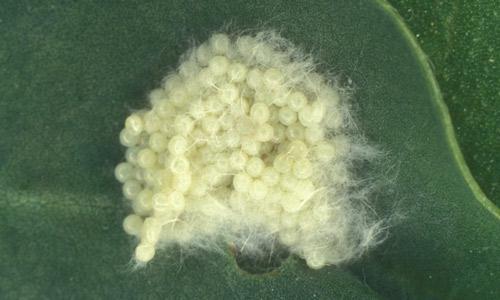Fall Armyworm: Be on the Lookout!
go.ncsu.edu/readext?1022379
en Español / em Português
El inglés es el idioma de control de esta página. En la medida en que haya algún conflicto entre la traducción al inglés y la traducción, el inglés prevalece.
Al hacer clic en el enlace de traducción se activa un servicio de traducción gratuito para convertir la página al español. Al igual que con cualquier traducción por Internet, la conversión no es sensible al contexto y puede que no traduzca el texto en su significado original. NC State Extension no garantiza la exactitud del texto traducido. Por favor, tenga en cuenta que algunas aplicaciones y/o servicios pueden no funcionar como se espera cuando se traducen.
Português
Inglês é o idioma de controle desta página. Na medida que haja algum conflito entre o texto original em Inglês e a tradução, o Inglês prevalece.
Ao clicar no link de tradução, um serviço gratuito de tradução será ativado para converter a página para o Português. Como em qualquer tradução pela internet, a conversão não é sensivel ao contexto e pode não ocorrer a tradução para o significado orginal. O serviço de Extensão da Carolina do Norte (NC State Extension) não garante a exatidão do texto traduzido. Por favor, observe que algumas funções ou serviços podem não funcionar como esperado após a tradução.
English
English is the controlling language of this page. To the extent there is any conflict between the English text and the translation, English controls.
Clicking on the translation link activates a free translation service to convert the page to Spanish. As with any Internet translation, the conversion is not context-sensitive and may not translate the text to its original meaning. NC State Extension does not guarantee the accuracy of the translated text. Please note that some applications and/or services may not function as expected when translated.
Collapse ▲Fall Armyworm (Spodoptera frugiperda) has been seen in our local area! Typically this pest is of concern mainly for turf but can also impact other crops and ornamental plants. Fall armyworm can damage landscapes seemingly overnight typically due to large numbers associated with infestations. Adults in the form of moths can ride the tropical storm currents from southern parts of the U.S, and hatched larva typically impacting our area late summer into early fall. Fall armyworm larva can be identified by the two distinctive dark stripes on either side of the larvae, as well as four black dots on the dorsal (back) side of each segment of the abdomen and a light-colored, upside-down “Y” marking on the head.
Female moths can lay eggs on different kinds of vegetation, street signs, buildings, etc. with one female moth able to lay as many as 1,000 eggs which hatch within 2-10 days. Once hatched, they drop down to turf and can rapidly feed on all foliar tissue available in massive numbers or “armies”. Multiple generations can occur within the summer timeframe. Damage to turf is distinctive with areas of defoliation and browning distinctly marked in waves and patches.

Fall Armyworm egg mass. Photo credit: J. Castner, UF
- Monitoring: By knowing what the egg masses look like, and by paying attention to new monitoring maps to track the patterns of emergence in our area, you can start mechanical means of control (scraping them off in soapy water, etc.) if you spot these eggs before they hatch. Typically we see egg masses laid in July and August in NC.
- Pest Control: chemical control usually doesn’t work as well as other caterpillar pests (true armyworms, black cutworms, etc.) due to the fact that they are in such large numbers that it is impossible to treat all of them as well as larger larvae typically doesn’t respond as well to chemical treatment. Often times residentially, natural predators and parasitic organisms keep populations in check. For commercial sites where thresholds of damage might warrant chemical treatment, please see the listed chemicals for fall armyworm below. Note that many of the chemicals below can be toxic to beneficial insects and should be used in accordance to the label, and only if the situation warrants treatment. Reach out to your local extension office for specific information and recommendations as it pertains to your situation.
| Insecticide and Formulation | Amount per 1000 sq. ft | Precautions |
| acephate (Orthene) | 0.5 to 1.2 oz. | Water in immediately after application. |
| chlorantraniliprole (Acelepryn) | 0.046 to 0.092 fl. oz. | |
| chlorpyrifos (Dursban) | See label | For use on golf courses; check new label. |
| indoxacarb (Provaunt) | 0.0625 to 0.25 fl. oz. | Not labeled for use on sod farms. |
| Pyrethroids (Deltaguard G, Scimitar, Talstar, Tempo, Cynonara, Alucion) | See label | |
| Spinosad A+D (Conserve SC) | 1.25 fl. oz. | Rate varies with size |
| Tetraniliprole (Tetrino) | 0.367 to 0.735 fl. oz. | Apply when pest presence is first observed. |
*see NC Ag Chemical Manual for more details about chemical options.
To learn more about fall armyworm, check out these resources below:
TurfFiles: Fall Armyworm in Turf Factsheet






